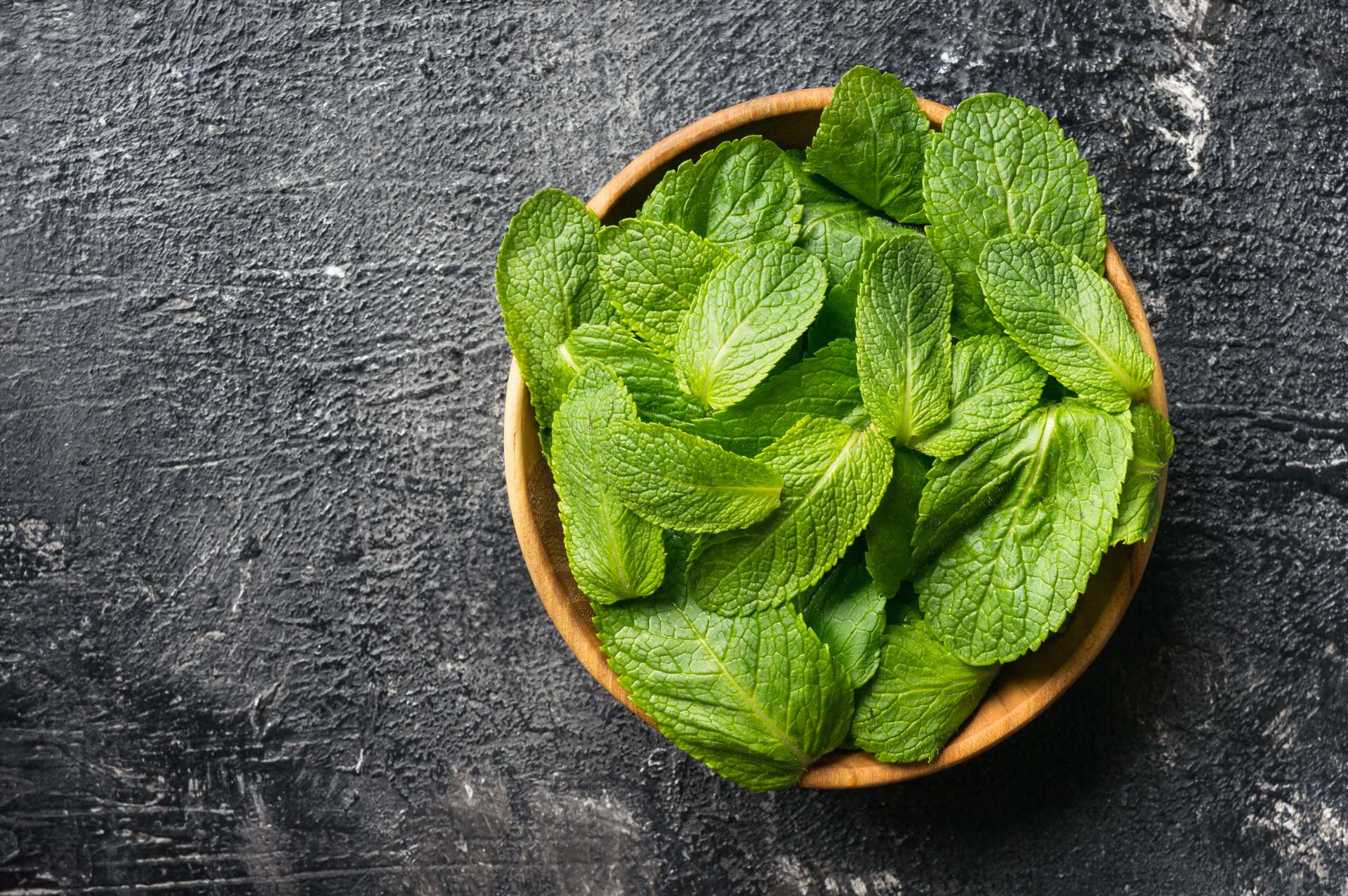

FAQs
Where Does Flatulence Come From
Modified: September 23, 2023
Learn where flatulence comes from and get answers to your general questions about this common bodily function.
(Many of the links in this article redirect to a specific reviewed product. Your purchase of these products through affiliate links helps to generate commission for Under-tec.com, at no extra cost. Learn more)
Table of Contents
Where Does Flatulence Come From
Flatulence, also known as passing gas or farting, is a natural bodily function that everyone experiences. It may be a source of embarrassment or discomfort for some, but it’s important to understand that flatulence is a normal part of human digestion. So, where does flatulence come from?
The process of flatulence starts in the digestive system, specifically in the large intestine. When we eat and drink, the food and liquids pass through our digestive tract, where they are broken down by enzymes and bacteria. During this process, various gases are produced as byproducts.
One major contributor to flatulence is the breakdown of carbohydrates. Foods such as beans, lentils, onions, and cabbage contain complex sugars that our bodies cannot fully digest. These undigested sugars then move into the large intestine, where they are broken down by bacteria. As a result, gases like methane, hydrogen, and carbon dioxide are released.
Gut bacteria play a significant role in flatulence. The human gut contains trillions of bacteria that help with digestion and the breakdown of food. Some of these bacteria produce gases as they ferment the undigested sugars and fibers in the large intestine. The type and amount of gases produced can vary from person to person, depending on their gut microbiota.
Swallowed air is another source of flatulence. When we eat or drink quickly, chew gum, smoke, or use a straw, we tend to swallow more air than usual. This excess air travels down the digestive system and can contribute to the overall amount of gas in the intestines. This is why you may experience increased flatulence after a meal or while drinking carbonated beverages.
While flatulence is a normal bodily function, excessive or persistent flatulence can be a symptom of underlying medical conditions. Conditions such as lactose intolerance, celiac disease, irritable bowel syndrome (IBS), and gastrointestinal infections can lead to increased flatulence. If you have concerns about your flatulence patterns or experience other gastrointestinal symptoms, it’s important to consult a healthcare professional for an accurate diagnosis.
Managing and reducing flatulence can be achieved through various methods. Modifying your diet by decreasing intake of gas-producing foods, eating smaller meals more frequently, and avoiding carbonated beverages can help. Including more fiber-rich foods and drinking plenty of water can promote healthy digestion and reduce the likelihood of constipation, which can contribute to flatulence.
Incorporating regular physical activity into your routine can also aid digestion. Exercise stimulates bowel movements and helps gas move through the intestines more efficiently. Additionally, implementing stress-management techniques like deep breathing, yoga, or meditation can reduce digestive discomfort caused by stress, which can contribute to flatulence.
Flatulence is a natural process that occurs as a result of the digestive system breaking down food and the presence of gut bacteria. By understanding its origins and implementing strategies to manage and reduce it, we can embrace the natural bodily function of flatulence without discomfort or embarrassment.
Introduction
Flatulence, commonly known as passing gas or farting, is a part of our everyday bodily functions. While it may be considered an embarrassing or taboo topic, understanding where flatulence comes from is essential for maintaining good digestive health and overall well-being.
The human digestive system is a complex network of organs responsible for breaking down the food we eat and extracting nutrients. As a result of this intricate process, gases are naturally produced in the digestive tract. These gases can accumulate and eventually need to be released, leading to the characteristic sound and odor of flatulence.
But where exactly does flatulence come from? The two primary sources of flatulence are the breakdown of food in the digestive system and the presence of certain bacteria in our gut.
When we consume food, it goes through a series of processes that begin in our mouths and continue down the esophagus into the stomach. Enzymes and acids in our stomach break down the food, and it moves into the small intestine, where further digestion takes place. Along this journey, gases are produced as a byproduct of the chemical reactions involved in breaking down carbohydrates, proteins, and fats.
The breakdown of carbohydrates, in particular, leads to the production of gases like methane, hydrogen, and carbon dioxide. Certain types of carbohydrates, such as those found in beans, lentils, onions, and cabbage, are difficult for our bodies to fully digest. As a result, undigested particles pass into the large intestine, where they are broken down by bacteria. This process results in the release of additional gases.
Another significant contributor to flatulence is the presence of bacteria in our gut. Our intestines are home to trillions of bacteria, collectively known as the gut microbiota. Many of these bacteria play a crucial role in digestion and the breakdown of food. However, some of them produce gases as part of their metabolic activity. The composition of your gut microbiota can vary from person to person, influencing the types and amounts of gases produced.
It’s important to note that while flatulence is a natural and normal bodily function, excessive or persistent flatulence can be a sign of underlying medical conditions. Conditions such as lactose intolerance, celiac disease, irritable bowel syndrome (IBS), and gastrointestinal infections can contribute to increased flatulence. If you’re experiencing frequent or bothersome flatulence along with other digestive symptoms, it’s advisable to consult a healthcare professional for proper evaluation and diagnosis.
In the following sections, we will delve deeper into the various factors that contribute to flatulence and explore ways to manage and reduce excessive gas production. By gaining a better understanding of the origins of flatulence, we can make informed choices to support our digestive health and overall well-being.
The Digestive System and Its Role in Flatulence
The digestive system plays a vital role in our overall health and well-being, including the production of flatulence. Understanding how the digestive system functions can help shed light on why flatulence occurs and how to manage it.
The digestive process begins as soon as we start eating. Food enters the mouth and is mechanically broken down by chewing. Enzymes in our saliva start the process of chemical digestion before the food moves down the esophagus and into the stomach.
In the stomach, the food mixes with gastric acids and enzymes, breaking it down further into a semi-liquid substance called chyme. From there, the chyme moves into the small intestine, where the majority of nutrient absorption takes place.
As the chyme makes its way through the small intestine, it encounters digestive juices produced by the pancreas and bile from the liver. These secretions help break down carbohydrates, proteins, and fats into their smaller components, which can be absorbed by the lining of the small intestine and transported to the bloodstream.
During the process of breaking down food, gases are produced as byproducts. Carbohydrates, for example, are broken down into simple sugars, such as glucose. This process releases gases like methane, hydrogen, and carbon dioxide. The gases accumulate and eventually need to be released, resulting in flatulence.
Once the majority of nutrient absorption occurs in the small intestine, the remaining undigested particles, along with water, fiber, and bacteria, move into the large intestine. The large intestine is the site where most of the gas production and accumulation take place.
The undigested carbohydrates and fiber serve as food for bacteria in the large intestine. These bacteria produce enzymes, which further break down the remaining carbohydrates and fiber. As a result, additional gases are produced, contributing to flatulence.
In addition to bacteria, swallowed air is another factor that contributes to flatulence. When we eat or drink quickly, chew gum, smoke, or use a straw, we tend to swallow air along with our food or drink. This excess air can travel down the digestive system and contribute to the overall amount of gas in the intestines.
It’s worth highlighting that the amount of gas produced and the frequency of flatulence varies from person to person. Factors such as the type of diet, gut microbiota composition, and individual digestive processes can all influence the amount of gas produced and passed.
Understanding the role of the digestive system in flatulence can help us make informed choices about our diet and lifestyle to manage excessive gas production. In the following sections, we will explore the foods and drinks that can contribute to flatulence, the role of gut bacteria, and strategies to reduce and manage flatulence effectively.
Food and Drink: Culprits of Flatulence
The food we consume plays a significant role in the production of flatulence. Certain types of food contain components that are more likely to contribute to gas production in the digestive system. By understanding which foods and drinks are more prone to causing flatulence, we can make informed dietary choices to manage and reduce its occurrence.
One of the primary culprits of flatulence is the consumption of foods that are high in carbohydrates, particularly those that contain complex sugars. Examples of such foods include beans, lentils, onions, cabbage, broccoli, and Brussels sprouts. These types of carbohydrates are challenging for our bodies to fully break down and digest in the small intestine. As a result, undigested particles move into the large intestine, where bacteria break them down, leading to gas production.
In addition, high-fiber foods can also contribute to flatulence. While fiber is an essential component of a healthy diet and aids in digestive health, some types of fiber can be more gas-producing. Foods like whole grains, fruits, vegetables, and legumes are rich in fiber, providing numerous health benefits but can also lead to increased flatulence.
Fizzy or carbonated drinks are another potential culprit for flatulence. Carbonation allows carbon dioxide gas to dissolve into the beverage, resulting in the formation of bubbles. When consumed, these bubbles can make their way into the digestive system, contributing to overall gas production and potential flatulence.
Artificial sweeteners, particularly those containing sugar alcohols like sorbitol and mannitol, can also trigger flatulence in some individuals. These sweeteners are commonly found in sugar-free gums, candies, and some processed foods. Since our bodies do not fully absorb or break down sugar alcohols, they pass into the large intestine, where bacteria ferment them, resulting in gas production.
Spicy and greasy foods can also contribute to flatulence. These types of foods can irritate the digestive system, leading to an increase in gas production. Additionally, some individuals may have specific sensitivities or intolerances to certain spices or types of fats, which can exacerbate flatulence symptoms.
It’s important to note that the impact of specific food and drink on flatulence can vary from person to person. Some individuals may experience significant flatulence after consuming certain foods, while others may not notice any effect. Factors such as the individual’s digestion, gut microbiota composition, and overall diet can influence the extent to which certain foods contribute to flatulence.
Managing flatulence caused by food and drink involves identifying trigger foods and adjusting your diet accordingly. Keeping a food diary can help track which foods consistently lead to flatulence symptoms. Gradually reducing the intake of these foods or finding alternative options can help reduce gas production and alleviate discomfort.
Additionally, incorporating methods like soaking beans before cooking and chewing food thoroughly can aid digestion and minimize gas production. For those sensitive to carbonated beverages, opting for still drinks or reducing consumption can also be beneficial.
By being aware of the potential culprits of flatulence in our diet, we can make informed choices and minimize its impact on our lives.
Gut Bacteria and Flatulence
Our gut is home to trillions of bacteria, collectively known as the gut microbiota. These bacteria play a crucial role in our digestion, immune system, and overall health. When it comes to flatulence, the composition of our gut bacteria can significantly influence the amount and types of gases produced in our digestive system.
Within the gut microbiota, there are several strains of bacteria that produce gases as part of their metabolic activity. These bacteria help break down undigested carbohydrates and fibers that reach the large intestine, contributing to gas production and potential flatulence. Each individual has a unique combination of bacteria in their gut, which can affect the composition and quantity of gases produced.
Some types of bacteria produce gases that are less odorous, such as hydrogen and carbon dioxide. Other bacteria produce gases like methane, which can contribute to foul-smelling flatulence. The balance and diversity of bacteria in the gut can influence the types and amounts of gases produced, leading to variations in flatulence characteristics among individuals.
Factors such as diet, lifestyle, and medication use can impact the gut microbiota composition and consequently affect flatulence. For example, high-fiber diets promote the growth of certain types of bacteria that can produce more gas. Similarly, the use of antibiotics can disrupt the balance of beneficial bacteria in the gut, potentially leading to alterations in gas production.
In some cases, an imbalance of gut bacteria, known as dysbiosis, can contribute to excessive flatulence. Dysbiosis occurs when there is an overgrowth of certain bacteria or a decrease in beneficial bacteria. This imbalance can lead to increased gas production and digestive symptoms, including flatulence.
In addition to the type of bacteria present, the overall health and functioning of the gut also play a role in flatulence. A healthy gut lining enables effective absorption of nutrients and helps regulate the movement of food through the digestive system. When the gut lining is compromised, digestion may be impaired, resulting in increased gas production and potential flatulence.
Managing and maintaining a healthy gut microbiota can help reduce excessive flatulence. One way to support a healthy gut is by consuming a balanced diet that includes a variety of fruits, vegetables, whole grains, and probiotic-rich foods. Probiotics, which are beneficial bacteria, can help restore and maintain a healthy balance of gut bacteria.
Additionally, taking care of the gut lining by avoiding irritants, such as certain medications or excessive alcohol consumption, can support digestive health and reduce flatulence. Managing stress levels and practicing relaxation techniques can also contribute to a healthy gut environment.
Overall, the complex interplay between gut bacteria, diet, and gut health can significantly impact flatulence. Understanding this relationship and taking steps to support a healthy gut microbiota can help manage and reduce excessive gas production, promoting overall digestive well-being.
Swallowed Air and Its Contribution to Flatulence
When it comes to flatulence, it’s not just the breakdown of food and gut bacteria that play a role. Swallowed air can also contribute to the overall amount of gas in our digestive system, leading to flatulence.
Swallowing air, also known as aerophagia, is a common occurrence during eating and drinking. Sometimes, we may swallow more air than usual due to certain habits or behaviors. When excess air enters the digestive system, it can contribute to gas accumulation and the need for flatulence.
There are several factors that can lead to increased air swallowing:
- Eating or drinking too quickly: When we eat or drink rapidly, we’re more likely to swallow air along with our food or beverage. This can be particularly problematic when consuming hot or carbonated drinks or when consuming food without proper chewing.
- Chewing gum or using straws: Chewing gum or using straws can also introduce excess air into the digestive system. The constant chewing or the suction involved in using a straw can result in swallowing more air.
- Smoking: Smoking involves inhaling smoke, which can introduce air into the lungs. When we exhale or eat while smoking, we may swallow some of this air, leading to increased flatulence.
The excess air that is swallowed can travel down the digestive system and accumulate in the stomach and intestines. This air, along with the gases produced by the breakdown of carbohydrates and the activity of gut bacteria, contributes to the overall volume of gas in our digestive system.
It’s worth noting that not all swallowed air leads to flatulence. Some of the ingested air is released through belching or burping. However, when the air reaches the lower part of the digestive system, it may need to be released as flatulence.
To reduce the contribution of swallowed air to flatulence, there are a few simple strategies you can try:
- Eat and drink slowly: By slowing down your eating and drinking pace, you can minimize the amount of air you swallow along with your food or beverage.
- Avoid chewing gum and using straws: If you are prone to excessive flatulence, consider avoiding chewing gum or using straws, as these can introduce additional air into your digestive system.
- Quit smoking: Quitting smoking not only has numerous health benefits but can also reduce the amount of air you swallow and minimize flatulence.
By being mindful of your eating habits and making small adjustments, you can reduce the amount of swallowed air and subsequently minimize flatulence. However, if you continue to experience excessive or bothersome flatulence despite these measures, it’s important to consult with a healthcare professional to rule out any underlying conditions that may be contributing to your symptoms.
Medical Conditions and Flatulence
While flatulence is a normal bodily function, excessive or persistent flatulence can sometimes be a symptom of underlying medical conditions. Various digestive disorders and conditions can contribute to increased gas production and flatulence. Understanding these conditions can help identify the potential causes of excessive flatulence and guide appropriate treatment.
Lactose intolerance is a common condition that can lead to flatulence. It occurs when the body doesn’t produce enough of the enzyme lactase, which is responsible for breaking down lactose, the sugar found in dairy products. As a result, undigested lactose reaches the large intestine, where it is fermented by bacteria, leading to the production of gases and flatulence.
Celiac disease, an autoimmune disorder, is another condition that may cause flatulence. It is characterized by an intolerance to gluten, a protein found in wheat, barley, and rye. In individuals with celiac disease, consuming gluten triggers an immune response that damages the small intestine. This damage can lead to malabsorption of nutrients and increased gas production, resulting in flatulence.
Irritable bowel syndrome (IBS) is a functional gastrointestinal disorder that can cause a range of digestive symptoms, including flatulence. The exact cause of IBS is unknown, but it is thought to involve abnormalities in the gut-brain axis, sensitivity to certain foods, and changes in gut motility. Excess gas production and altered gut function can contribute to the development of flatulence in individuals with IBS.
Gastrointestinal infections, such as bacterial overgrowth or parasitic infections, can also lead to flatulence. These infections disrupt the normal balance of bacteria in the gut and can cause increased gas production and digestive symptoms, including flatulence. In such cases, treating the underlying infection can help alleviate flatulence.
Other medical conditions, such as inflammatory bowel disease (IBD), pancreatic insufficiency, and gastroesophageal reflux disease (GERD), can also be associated with flatulence. Inflammatory bowel disease, including Crohn’s disease and ulcerative colitis, causes inflammation in the digestive tract, leading to symptoms like abdominal pain, diarrhea, and flatulence. Pancreatic insufficiency occurs when the pancreas doesn’t produce enough digestive enzymes, preventing proper digestion of food and causing increased gas production. GERD, a condition characterized by acid reflux, can sometimes result in excessive swallowing of air, leading to flatulence.
If you experience persistent or severe flatulence along with other digestive symptoms, it’s important to consult with a healthcare professional for an accurate diagnosis. They will be able to assess your symptoms, conduct any necessary tests, and provide appropriate treatment for the underlying medical condition contributing to your flatulence.
Managing flatulence associated with medical conditions often involves a combination of dietary modifications, lifestyle changes, and targeted medical therapies. In some cases, working with a registered dietitian or nutritionist who specializes in digestive disorders can be beneficial in developing a personalized plan to manage flatulence and optimize digestive health.
Managing and Reducing Flatulence
While flatulence is a natural part of digestion, excessive or bothersome flatulence can impact our comfort and well-being. Fortunately, there are strategies and lifestyle changes that can help manage and reduce flatulence to a more manageable level.
1. Adjust your diet: Identifying and avoiding foods that trigger excessive gas production can make a significant difference. Foods like beans, lentils, onions, cabbage, broccoli, and carbonated beverages are known to cause flatulence in many individuals. Keeping a food diary can help pinpoint specific trigger foods and allow for better management.
2. Eat smaller, more frequent meals: Eating large meals can put extra strain on your digestive system, leading to increased gas production. Opting for smaller and more frequent meals throughout the day can help ease the burden on your digestive system and reduce the likelihood of excessive flatulence.
3. Chew your food thoroughly: Properly chewing your food aids in the initial stages of digestion and helps reduce the amount of air you swallow. Take your time with each bite, breaking down the food into smaller particles before swallowing. This can also support better overall digestion and nutrient absorption.
4. Increase fiber intake gradually: While fiber is important for digestion and overall health, increasing your fiber intake too quickly can cause excessive gas production. Gradually introduce high-fiber foods into your diet and drink plenty of water to help your body adjust and minimize flatulence.
5. Stay hydrated: Drinking an adequate amount of water is essential for maintaining proper digestion. Water helps soften stools and allows for smoother transit through the digestive system, reducing the likelihood of constipation and flatulence.
6. Regular physical activity: Engaging in regular exercise helps stimulate digestion and promotes bowel movements. This can help gas move through the gastrointestinal tract more efficiently, reducing the likelihood of flatulence.
7. Stress management: Stress can impact digestion and contribute to symptoms like flatulence. Incorporating stress-management techniques into your daily routine, such as deep breathing exercises, yoga, meditation, or engaging in hobbies you enjoy, can help reduce digestive discomfort associated with stress.
8. Probiotics: Probiotics are beneficial bacteria that can help maintain a healthy gut microbiota. They can be consumed through foods like yogurt, kefir, sauerkraut, or taken as supplements. Probiotics help support digestion and may help reduce excessive flatulence in some individuals.
9. Over-the-counter remedies: There are over-the-counter products available, such as simethicone, that can help break down gas bubbles in the digestive system and reduce flatulence. These products can provide temporary relief but should not be used as a long-term solution without consulting a healthcare professional.
It’s important to remember that what works for one person may not work for another. It may take some trial and error to find the strategies that best manage and reduce flatulence for you. If flatulence is persistent, severe, or accompanied by other concerning symptoms, it’s crucial to consult a healthcare professional for a proper evaluation and personalized guidance.
By implementing these management strategies and making lifestyle adjustments, you can effectively reduce excessive flatulence and improve your overall digestive comfort and well-being.
Conclusion
Flatulence, though sometimes seen as embarrassing or uncomfortable, is a normal bodily function that arises from the digestion process. The breakdown of carbohydrates, the presence of gut bacteria, and swallowed air all contribute to the production of gas in our digestive system, which eventually needs to be released as flatulence.
While flatulence is generally harmless, excessive or persistent flatulence can be a symptom of underlying medical conditions. Lactose intolerance, celiac disease, IBS, gastrointestinal infections, and other digestive disorders can all contribute to increased gas production and flatulence. Seeking medical attention and proper diagnosis is important if flatulence becomes problematic or is accompanied by other concerning symptoms.
Fortunately, there are steps we can take to manage and reduce flatulence. Adjusting our diet to avoid trigger foods, eating smaller and more frequent meals, and chewing food thoroughly can help reduce gas production. Increasing fiber intake gradually, staying hydrated, exercising regularly, and managing stress can also aid in managing flatulence. The use of probiotics or over-the-counter remedies may provide temporary relief in some cases.
It’s important to remember that everyone’s experience with flatulence is unique, and what works for one person may not work for another. It may require some trial and error to find the strategies that best suit your needs. Consulting with a healthcare professional or a registered dietitian can provide personalized guidance and support.
By understanding the factors that contribute to flatulence and implementing strategies to manage it, we can find a balance that allows us to live comfortably and confidently. Flatulence is a natural part of our digestive system, and by embracing this bodily function, we can focus on maintaining our overall digestive health and well-being.










